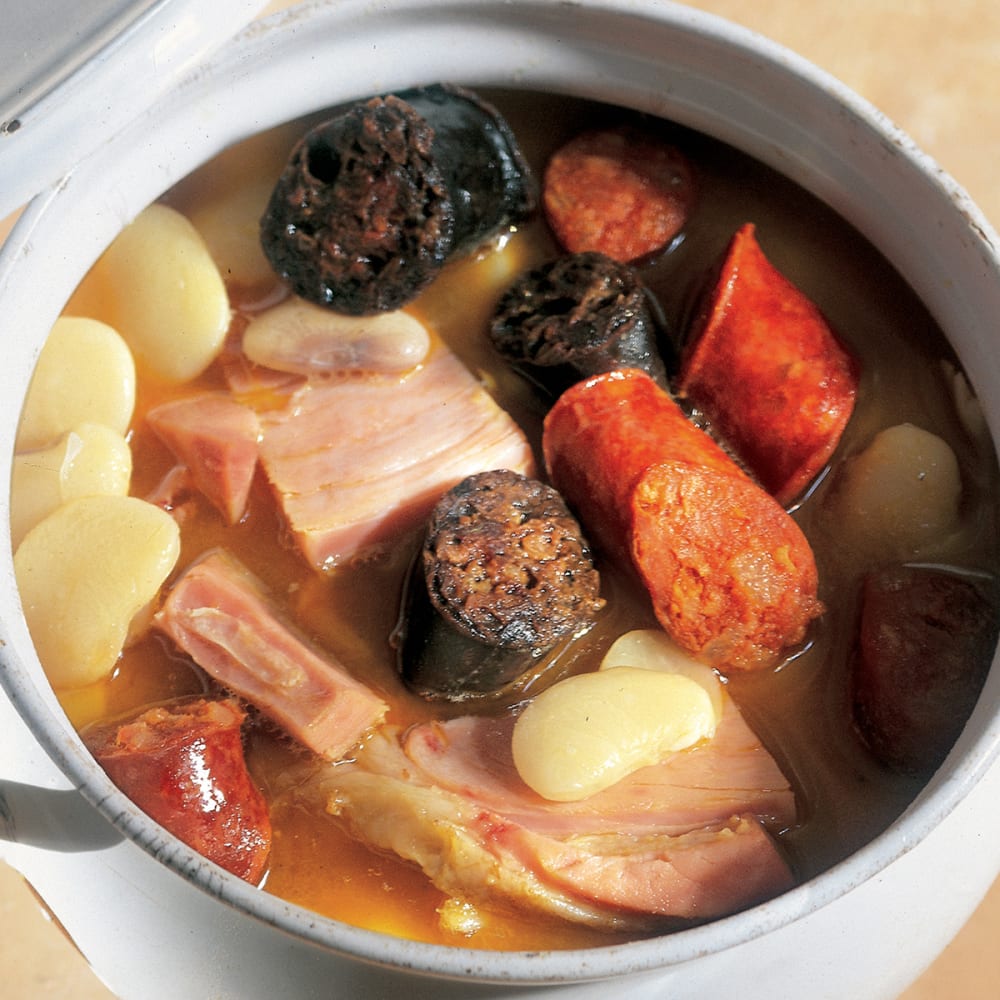Mission to Find the Perfect Bowl of Beans
Jonathan Harris | January 2021




We were on a mission to find the perfect bowl of beans. We were visiting the ancient kingdom of Asturias in the far north of Spain, a verdant region of jagged mountains that march all the way to the Cantabrian Sea. We drove north from Oviedo, seat of the great Visigothic kings who battled mightily against the invading Moors in the 8th and 9th centuries. It was a cool overcast morning, with wispy fog drifting through the valleys.

We were following the advice of cookbook author Penelope Casas, who wrote in her book “Discovering Spain” that the finest Fabada Asturiana stew could be enjoyed at the tiny restaurant ‘La Maquina,’ located at a crossroads near the highway north of Oviedo. Following a crumpled map on the dashboard (this was before cellphones and GPS), we drove in circles trying to find this hidden gem. It turns out La Maquina has no obvious sign, but we finally spotted a whimsical locomotive in front of a modest building – we had found the namesake for La Maquina.
My parents and I scooted in the front door past a stack of beer bottles into a comedor not much bigger than our dining room at home. We sat at a table and took in the décor, which was both elegant and rustic, with wooden beams on the ceilings and white tablecloths. We wasted no time in ordering bowls of their signature dish, Fabada Asturiana bean stew.
Now, I have to admit, I was skeptical. What was the big fuss about a bowl of beans? I wasn’t a big fan of beans in the first place and the idea triggered memories of the insipid franks and beans of my childhood.
A few minutes later, the steaming bowls of fabada arrived, accompanied by big slices of rustic crusty bread. The first thing that hit me was the smoky, earthy aroma, evoking a memory of smoke drifting from the chimneys of an ancient stone village we had visited the day before. I learned that Spain’s amazing paprika, oakwood smoked Pimentón de La Vera, was the source of this heavenly aroma.
The bowl was filled with large white beans, along with chunks of pork belly, blood sausage (morcilla) and chorizo. I scooped a few beans into my spoon and had a taste. They were firm yet delicate, with a creamy texture that had absorbed all the meaty, smoky flavor of the broth. Not a hint of graininess or mushy texture - now this was no ordinary bowl of beans! My eyes were opened to one of Spain’s iconic foods.

Time and time again, I am struck by how simple traditional dishes in Spain are elevated by exceptional ingredients. Dishes like Fabada Asturiana shouldn’t be this extraordinary. But, like so many other cooks and chefs in Spain, the owners of La Maquina refuse to compromise on the quality of the simplest ingredients. Fabada beans from Asturias, called “Fabes de La Granja,” are protected by a Denomination of Origin and must be grown in this mountainous region. They take much longer to mature than typical white beans and are hand cultivated and harvested to make sure they are the very finest quality.
This is another example of local pride and adherence to tradition without compromise that I have found across Spain, from the fuet sausage of Catalunya to the canned seafood of Galicia. Ingredients like fabes beans are simple, but by no means unsophisticated. Instead, they are the result of careful selection over centuries, and painstaking cultivation to capture their best essence.
This was no ordinary bowl of beans. This was an expression of the history of the ancient Kingdom of Asturias, each bite a taste of the pride of place built over centuries.
I left La Maquina with my coat pulled tight against the afternoon drizzle, perfect fabada eating weather in my book! As we drove back to our hotel rooms in Oviedo, I knew I would never look at a bowl of beans the same way again.

